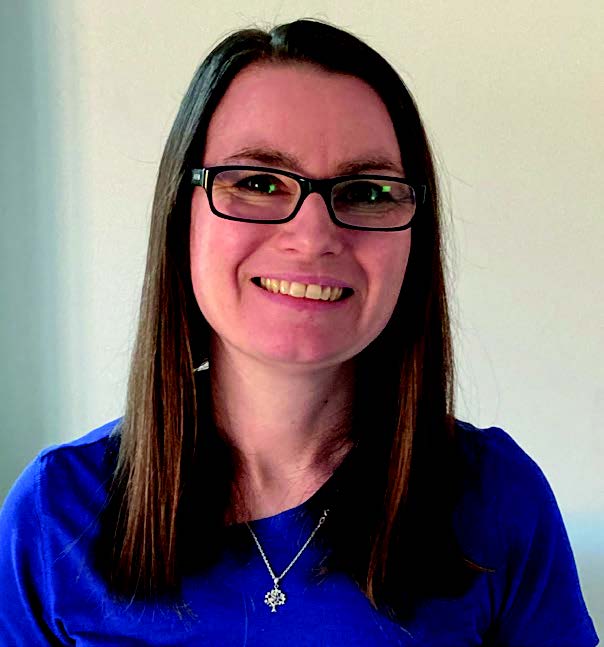
Collegiality in Action
Over the last two months, as we have seen learning and teaching shift, for most students, from classrooms to living rooms, teachers across Scotland have worked relentlessly to support children and young people, despite the challenges of the pandemic.
This month, we have spoken to two teachers who have reflected on the value of planning for alternative models of provision; their experience of delivering remote learning and teaching; and the importance of collegiality in doing their best for pupils and in looking after their own health and wellbeing and that of their colleagues.

Mairi Green, a primary teacher and EIS Learning Rep in West Lothian, told us about the collegiate approach adopted in her school and about the importance of recognising the strength of the staff group and of supporting each other through these challenging times.
As a staff, we wanted to reflect on learning and teaching, during the first period of lockdown, to develop and improve learning experiences for our pupils and to plan professional learning for ourselves, based on our digital learning needs.
During a collegiate session at the beginning of this academic year, we reflected on the progress we had made in terms of our digital skills and in using them to plan and deliver lessons remotely. We took some time to acknowledge these new skills, the support we had given each other in developing new teaching approaches, and the successes we had achieved after such a dramatic and unexpected change. We then considered how we would move forward as a school to incorporate these skills in opportunities to use digital learning within the school day and at home by learners. By identifying our own areas of strength and development, we planned and delivered a series of CLPL sessions in specific areas around digital pedagogy.
Building on the feedback we had received from parents during and after the first lockdown, we gathered further views about remote learning experiences, through a parental survey and virtual discussions with our Parent Council. We considered the types of difficulties experienced by families, the barriers they had faced and the aspects of remote learning which had worked well.
“By discussing the digital skills aspect, some of these pupils were able to open up and share their feelings and experiences in a different way. Our pupils identified the things that worked for them”
Importantly, we discussed the remote learning experience with our pupils, both in terms of their emotional and mental health and wellbeing and digital skills. For some of our young people, it was a difficult subject to discuss and they were initially reluctant to talk openly about it, preferring to move on and forget. As a team, we planned and used an authority recovery approach with a focus on wellbeing for all and input was targeted to ensure our pupils were emotionally supported with their return to school. By discussing the digital skills aspect, some of these pupils were able to open up and share their feelings and experiences in a different way. Our pupils identified the things that worked for them, the things they felt were more challenging and what changes could be made to address some of the barriers to learning. By doing this, they felt empowered and valued, particularly when they began to see their ideas being acknowledged and applied!
By using the information we had gathered across the school community, we devised outline plans which we could use in the event that we needed to move to alternative models of education delivery. By doing this, we felt more prepared for the range of different scenarios which might arise, including moves to blended or remote learning. We developed a shared understanding of what learning would look like in different contexts, incorporating areas of identified success, addressing areas of concern, ensuring equity across the school and supporting staff, pupils and families in the face of the changing demands of the pandemic. This was invaluable to us when the announcement came that we would move to an extended period of remote learning in January.
Having a shared vision; reflecting and planning in advance; and maintaining and developing digital skills for staff, pupils and parents has allowed us to provide a responsive remote learning experience for our children and young people. We have also continued to reflect regularly as a staff team, reviewing the impact of remote learning and teaching on workload and ensuring that arrangements are adapted where necessary, with support being given by the leadership team, to address staff concerns. In doing this, we have ensured that we, as a staff group, and our pupils can have the most positive experience of remote learning and teaching during this second period of lockdown.
A similar approach was adopted in another school in West Lothian, with staff at the beginning of the school session opting to use a remote learning platform to provide opportunities for children to share home learning and record their learning. When the move to remote learning came, familiarity with this platform ensured a smooth transition for teachers, pupils and parents alike. Michelle Davenport, a Primary 1 teacher, told us how she has continued her play pedagogy remotely and shared with us some tips for managing workload.

Before planning and resourcing learning activities, Primary 1-3 staff held a virtual meeting to ensure continuity between stages and composite classes. We reflected on feedback from parents, research evidence and guidance about high quality remote learning and teaching. We agreed the approach we would take, uploading learning on a daily basis so as not to overwhelm pupils and parents and building in time for the children to take breaks and engage in familiar routines, such as story time.
I uploaded videos of pre-recorded lessons and found that using ‘PowerPoints’ which I had ‘voiced over’ worked well for teaching phonics. I provided ideas for play based learning to fit around different teaching points and tried to limit screen time to one activity per day. To provide opportunity for interaction and connection, I also delivered ‘live’ lessons twice a week. One of these ‘live’ sessions would be for the full class which we called ‘Come and Play’. This involved storytelling and games, with opportunities for the children to interact. My second live session in the week was a smaller group activity, with a clear learning focus.
One of the things I found worked well was a weekly overview, with colour coding identifying when lessons were pre-recorded and which were live. This allowed parents to structure the activities around their family circumstances.
In managing workload, although planning and recording lessons took longer, I found ways to help with giving feedback virtually. The remote learning platform which we used, allowed me to record voice notes as feedback for the children. As well as being more time efficient for me, it engaged the children even more so than written feedback. I also made a point at the end of each day to switch off and pack away my school-work. By taking time to go for a walk, I was able to make the separation between work and home more effectively.
As we enter another period of change, with some teachers returning to school whilst others continue to deliver learning remotely, there is one thing that remains constant and that is the importance of the strength which can be derived from the collegiate approach to which Mairi and Michelle refer, its value in sharing practice and in ensuring that we take time to prioritise our own health and wellbeing.
